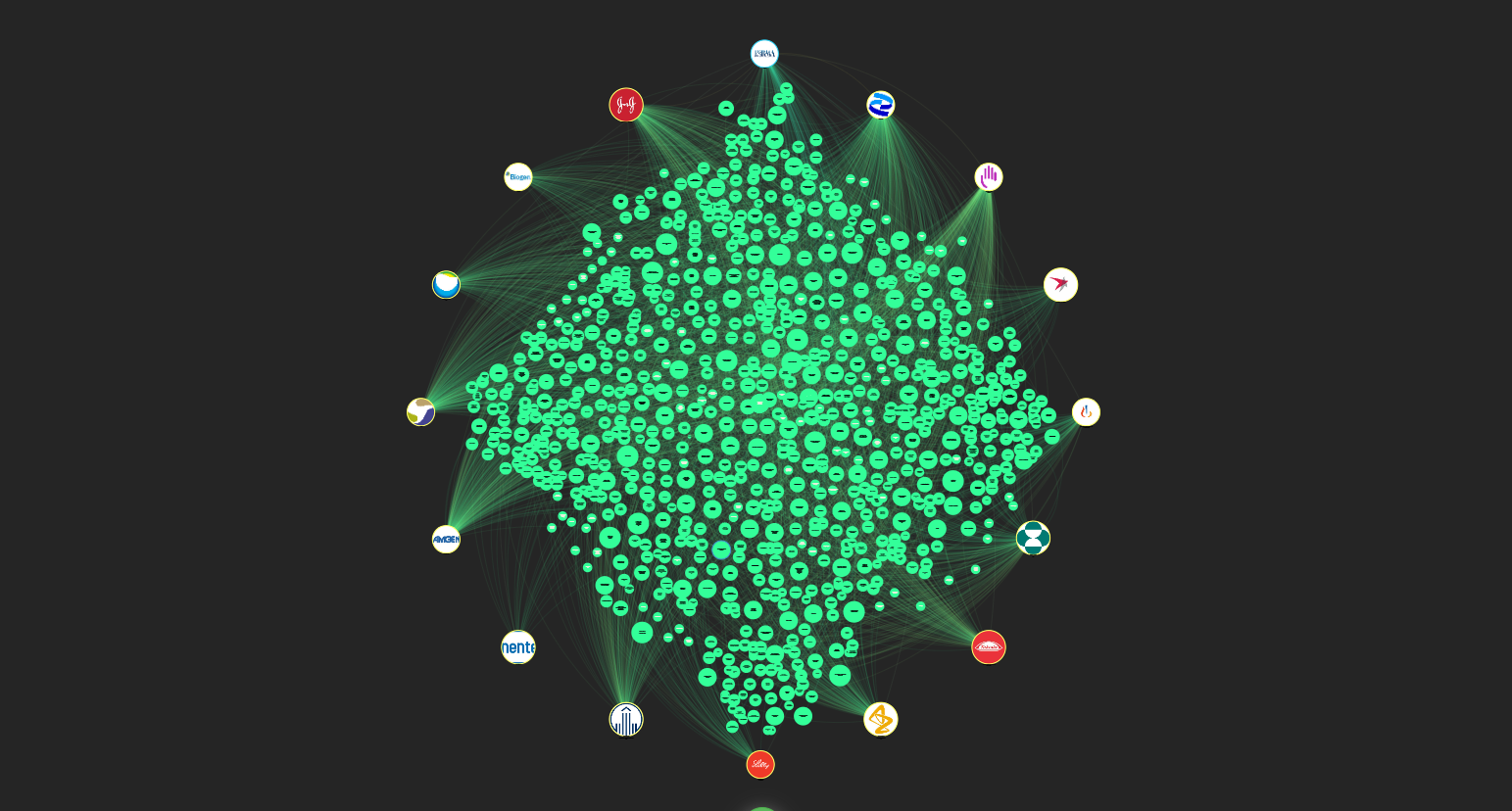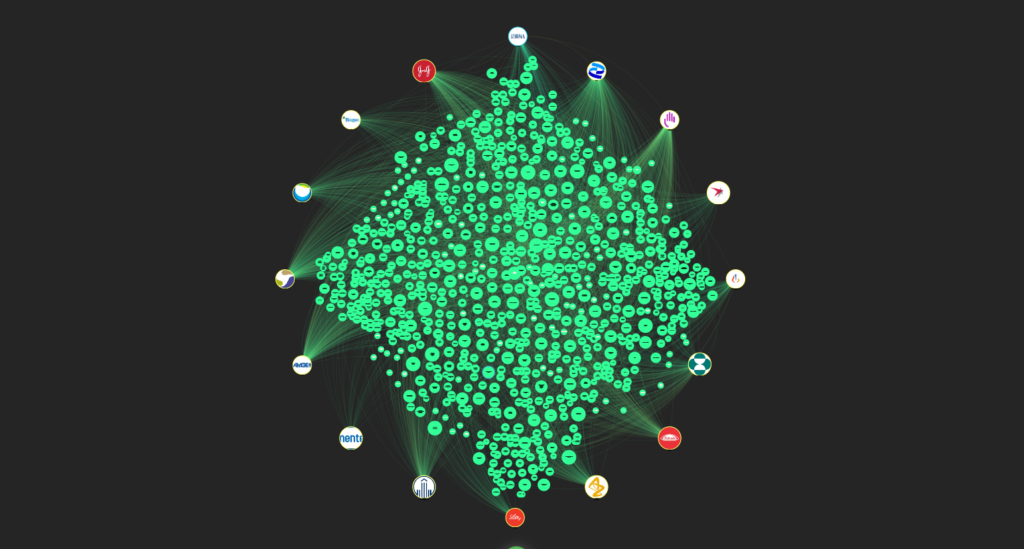
Mapping the PhRMA Grant Universe
An analysis of the $6 billion in grants distributed by PhRMA and its member companies
Executive Summary and Key Findings
The pharmaceutical industry is one of the most powerful industries in the nation. And until recently, with the passage of the Inflation Reduction Act (IRA), the industry had managed to fight off virtually all attempts to rein in outrageous drug prices. The industry’s lobbying, campaign contributions, and paid media campaigns are no doubt a major reason they were able to stave off reform for so long. This report delves into another, less scrutinized reason: the billions in grants the industry has given out to the most powerful advocacy organizations in the country.
We focus on grants from a subset of the pharmaceutical industry – the Pharmaceutical Research and Manufacturers of America (PhRMA), the nation’s most powerful pharmaceutical company trade group, and its member companies. Together, we refer to this group as the PhRMA Network.
Public Citizen gathered and analyzed hundreds of publicly available documents from the PhRMA Network and built a dataset including corporate and foundation grants given out by the PhRMA Network from 2010 through 2022. Our data represents a large sample size of grants, not the entire universe. We found, among other things:
- $6 billion in total grants dispersed by the PhRMA Network to more than 20,000 different recipients from 2010 through 2022. The total amounts to three and a half times more than the total lobbying spending, and seventy times more than the campaign contributions, dispersed by the PhRMA Network over that time.
- More than $720 million in grants given out in a single year – 2021. And close to $600 million in grants given out on average each year from 2018 through 2022.
- More than 460 organizations received money from five or more PhRMA Network entities. More than 70 organizations received money from 10 or more PhRMA Network entities.
- 13 of the nation’s largest and most powerful patient advocacy organizations received more than $10 million from the PhRMA Network. In total, the 13 received $266 million.
The money received by these organizations presents numerous conflicts of interest. When a patient advocacy organization stays silent on a debate on drug prices, publishes an op-ed supportive of a PhRMA Network position, or endorses a questionable drug, it is reasonable to wonder if the money they received from the PhRMA Network – sometimes totaling in the tens of millions of dollars – played any role in their decision making. Public Citizen found, among other things:
- Two patient advocacy organizations that reportedly stayed on the sidelines on the negotiations around drug price reform provisions in the IRA, the American Heart Association and the American Cancer Society, received $64 million and $23 million from the PhRMA Network, respectively. The American Heart Association donors include Pfizer ($8.3 million), the manufacturer of the most expensive cardiovascular drug ever launched in the United States. It also received $29 million from AstraZeneca, the manufacturer of an expensive drug used to treat heart failure, named as one of the first 10 drugs for which the Biden Administration will negotiate a price for under its new IRA authority, and $17 million from Sanofi. The American Cancer Society received $6 million from AstraZeneca, $4.7 million from Merck, and $3.4 million from Pfizer, all manufacturers of expensive cancer drugs.
- The American Diabetes Association received more than $11 million in grants from Sanofi and more than $7 million from Eli Lilly. Along with Novo Nordisk, the companies control 90% of the insulin market globally.
- One of the nation’s most prominent spinal muscular atrophy (SMA) organizations, Cure SMA, received more than $5.8 million from Novartis, the manufacturer of the SMA gene therapy that costs a stunning $2.25 million per dose.
- UsAgainstAlzheimer’s applauded the FDA’s controversial approval of the Alzheimer’s drug Aducanumab, a drug almost unanimously opposed by the FDA’s advisory committee. The group received $300,000 from Biogen in 2022, and at least $200,000 each from Biogen and Eisai, the drug’s two manufacturers, in 2021 and 2020. Both companies are in the organization’s highest tier of donor category, according to annual filings.
- Public Citizen found many op-eds that were published by PhRMA Network grant recipients criticizing government efforts to rein in drug prices. Many of the op-eds used PhRMA Network talking points. In some cases, the author and grant recipient received a grant around the time of the op-ed’s publication for “advocacy.”
Public Citizen analyzed lobbying records from 2018 through 2022 for both the PhRMA Network and its grant recipients. It revealed that the lobbying efforts of many grant recipients were intertwined with the PhRMA Network:
- A total of 740 lobbyists were hired by both grant recipients and members of the PhRMA Network. These grant recipients received $577 million from the PhRMA Network.
- 392 lobbyists were hired by a grant recipient and at least one of their specific PhRMA Network donors.
- 128 lobbyists were hired by a grant recipient and by at least one of their PhRMA Network donors to lobby on the same bills. For example, in the first quarter of 2020, lobbying firm Tarplin, Downs and Young lobbied Congress on behalf of the Juvenile Diabetes Research Foundation (JDRF) on 10 different bills including H.R. 3 and other drug pricing bills. In the same quarter, Tarplin lobbyists lobbied on nine of the same 10 bills for JDRF donors PhRMA and/or insulin manufacturers Eli Lilly and Sanofi.
- 392 lobbyists were hired by a grant recipient and at least one of their specific PhRMA Network donors.
The PhRMA Network companies are not mission-driven charities. They are some of the largest and most profitable companies in the world, hyper-focused on returning value to shareholders. It’s impossible to know how much the money affects the decision-making process of the grant recipients. But it is hard to believe $6 billion had no effect.
Conclusion
When PhRMA or one of its member companies sends a lobbyist to Capitol Hill to complain that any attempt by the government to curb excessive drug prices is the end of the Republic as we know it, most members may assume the lobbyist’s motives are not completely pure.
But if a patient advocacy group expresses doubts about a drug-pricing bill, that may have a greater impact. If a local advocacy organization publishes an op-ed in the member’s local paper, that will no doubt get a member’s attention. If a new controversial drug to treat a disease gets the ringing endorsement of the patient group representing those inflicted with the disease, that could carry great weight.
For the PhRMA Network, having patient groups and other non-profits on your side on policy is of immeasurable value. The $6 billion in grants we found, while only a portion of what they have distributed, may be money well spent.
The ultimate goal for many of the organizations receiving PhRMA Network money is to find a cure for the specific disease their patient group suffers from. There is no reason to doubt their commitment to that goal.
But another goal should be ensuring the patients they represent don’t go bankrupt from the cost of the drugs they need to stay alive. And nothing complicates that goal more than taking millions of dollars each year from the companies responsible for the sky-high drug prices.
Have the organizations receiving millions from the PhRMA Network done enough to advocate for more access and lower drug prices for the patients they represent?
It is hard to arrive at any other answer than no, they have not.
If they were doing enough on drug prices, they would not be in the good graces of, and receiving money from, the PhRMA Network, a group that does not look kindly on those that step out of line.
Explore the Interactive PhRMA Network Grant Universe Map
View a full screen version here
